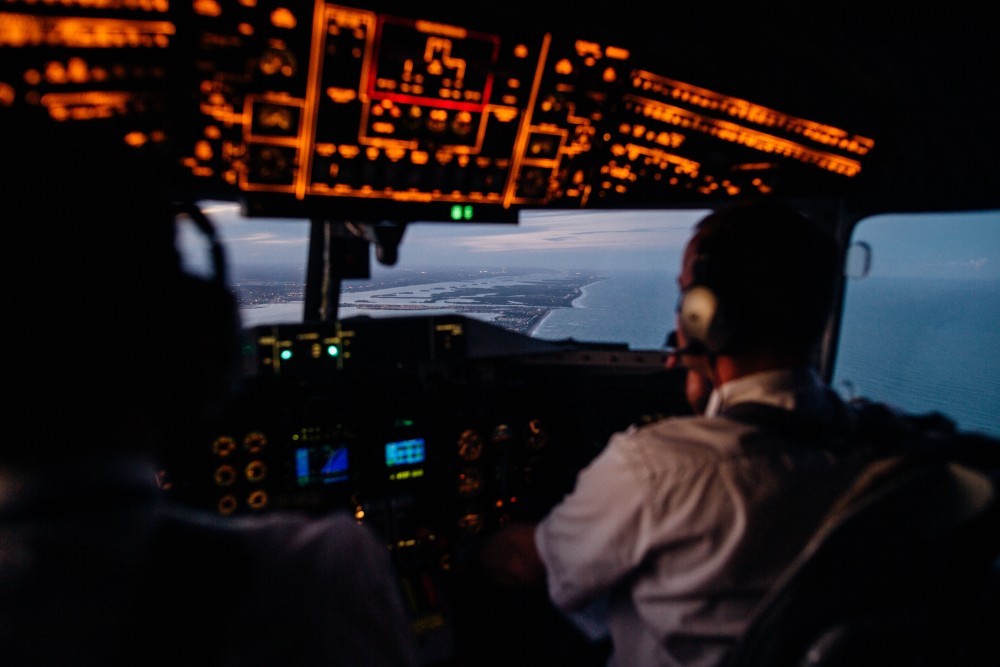Autonomous systems in the aeronautics sector
There is no doubt that the aeronautics world is currently immersed in a transition to more automatic vehicles. The development of growing levels of autonomy, designed to lighten the tasks of pilots and operators, is now a constant feature of the main sector projects; this trend is only likely to increase in the coming decades.

What exactly is autonomy? System autonomy could be defined as its capacity for acting according to its own objectives, precepts, internal states and knowledge with no human intervention from outside said system. This tells us that autonomous systems are not limited only to robots or unmanned vehicles, popularly known as drones; this definition in fact includes any automatic function that might cut down the workload or help the human in charge of the vehicle. Commercial aircraft are nowadays fitted with a high level of automation during all flight phases. In the military field systematic attempts are now being made to automate more and more functions. Witness the Auto-GCAS[1], which, fitted to F-16 fighters since 2014, can take over control of the aircraft in the event of pilot disorientation or the plane suddenly diving towards the ground. This system has already saved lives.
The autonomy boom in the aeronautics sector is by now clear and obvious, especially in the military area. Small wonder, in view of the advantages of these systems. Platforms with high levels of autonomy can operate in an environment with poor or restricted communications, greatly reducing the dependence on remote control stations. This capability, together with the greater range, is one of the key attributes when operating in hostile territory. As autonomy levels increase it will morph from the classic individual remote-control operational model into a swarm concept in which a single pilot will control more than one vehicle at once. This swarm concept will increase the battlefield presence while cutting down the number of imperiled lives and boosting coordination, intelligence and decision-making speed.
Military use of unmanned aircraft has been fairly commonplace for some years now. It is by no means rare for UAVs to cooperate with manned aircraft when working together on a common goal. These vehicles are not usually connected up to each other, however; they operate individually. Missions of this type could boost their chances of success if the manned and unmanned aircraft actively collaborated, applying the concept that has come to be known as Manned-Unmanned Teaming (MUT). This involves harnessing the team-working capacity of several manned and unmanned aircraft working as a single system (system of systems) so that the actions of each can affect the rest of the team.
MUT capabilities are crucial when it comes to boosting mission efficiency. They will enable UAVs to take on new mission roles such as a decoy to draw off enemy fire from manned aircraft, or advanced sensor, providing manned aircraft with intelligence on dangerous scenarios. For this collaboration capacity to be total, these roles need to be dynamic, with the possibility of reallocation between team members in the event of mission changes or loss of assets. The takeup of MUT will therefore be vital to mission success in ever-changing scenarios.
Although active collaboration between manned and unmanned aircraft still seems to be some way off, there are already projects underway to test the mettle of the first developments in this field. The United States’ Air Force Research Laboratory managed to demonstrate the formation flying capability of manned and unmanned aircraft in 2017 flight trials called Have Raider. These trials also achieved a dynamic mission adjustment: an unplanned threat was simulated that the team had to be capable of detecting and then tweaking mission priorities so that the unmanned aircraft could break formation, eliminate the threat and then join up again. Another interesting test was carried out by DARPA[2] in 2011. In this flight trial two unmanned aircraft, namely a NASA Global Hawk and Northrop Grumman’s Proteus prototype, successfully flew at a height of 45,000 feet with a distance between them of only 40 feet, a necessary capability for future implementation of autonomous air-to-air refueling. Another noteworthy test along similar lines was the flight test campaign completed by Airbus at the start of this very year, trying out its fully automatic air-to-air refueling system.
Some dissenting voices have been raised against the growing levels of autonomy, stressing the huge technological leap that will be necessary. Nonetheless, recent years have seen feats that we would not so long ago have dismissed as a pipedream. We at GMV are working to increase aeronautics safety by means of autonomous systems and functions, well aware of the difficulties posed by the development of these new technologies, but determined to form part of the sector’s future.
Author: Miguel Morgado Martín